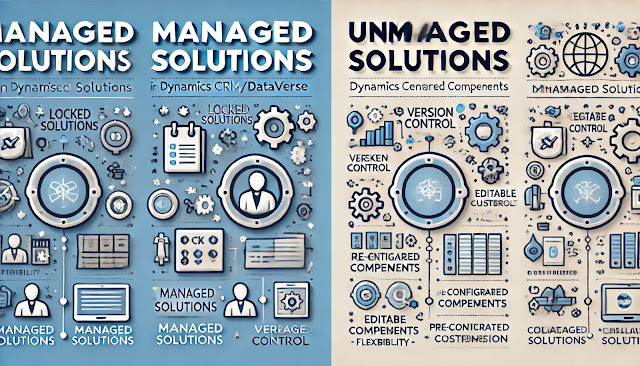Dynamics 365 Field Service : Configure facilities and equipment
In Dynamics 365 Field Service, "Configure facilities and equipment" is a key setup activity that helps define the physical resources required to deliver services—beyond just personnel. This includes buildings, machinery, tools, or any shared asset needed to complete work orders. Proper configuration ensures efficient scheduling, resource allocation, and availability tracking.
What Are Facilities and Equipment?
Facilities and equipment are defined as "resources" in Dynamics 365 Field Service. These are not people (like technicians), but physical assets required to perform certain jobs. They can be used alone or in combination with other resources (like crews or pools).
Examples:
- Facilities: Service bays, garages, repair shops, labs, clinics.
- Equipment: Ladders, cranes, diagnostic machines, testing kits.
Why Configure Facilities and Equipment?
✔ Accurate Resource Scheduling
Ensures that specific equipment or facilities are available and assigned when needed for a job.
✔ Optimized Resource Usage
Avoids double-booking of tools or locations by managing availability.
✔ Enables Complex Service Scenarios
Some work orders require a specific combination of a technician and a machine (e.g., technician + crane).
✔ Improves SLAs and Customer Satisfaction
By ensuring the right resources are always allocated to complete jobs on time.
How to Configure Facilities and Equipment
1. Go to Resource Settings
- Navigate to Resource → +New.
- Choose the resource type as “Facility” or “Equipment”.
2. Define Key Fields
- Name: Clearly label the asset (e.g., “Crane #2”, “Service Bay 1”).
- Resource Type: Select “Facility” or “Equipment”.
- Organizational Unit: Assign the asset to a specific business unit or territory.
- Time Zone: Set working hours based on local time zone.
- Roles (Optional): Define what role or function the resource plays.
- Skills (Optional): Attach required skills to filter it for applicable jobs.
3. Set Work Hours
- Define the working calendar for the resource.
- This determines when the equipment/facility is available for scheduling.
4. Enable for Scheduling
- Mark the resource as available for scheduling in the schedule board.
- Use filters or resource characteristics to define how dispatchers can match jobs with this resource.
Using Facilities & Equipment in Work Orders
- When creating a work order, you can define resource requirements that include facilities or equipment.
- The Schedule Board helps visualize available facilities/equipment alongside field agents.
- If any required item is unavailable, you can adjust appointment timing or reassign the resource.
Example Use Case
A medical equipment maintenance company sends technicians to calibrate MRI machines. Some tasks require a specific calibration tool (equipment). By setting up this equipment as a schedulable resource, dispatchers ensure that the technician and the calibration tool are both available at the same time and location.
Benefits Summary
- Reduces scheduling conflicts and improves resource utilization.
- Supports advanced scenarios like crew-based dispatch and shared resource pools.
- Increases field team productivity by ensuring all required tools and spaces are ready for each job.
- Enhances service delivery with better planning and coordination.











Comments
Post a Comment